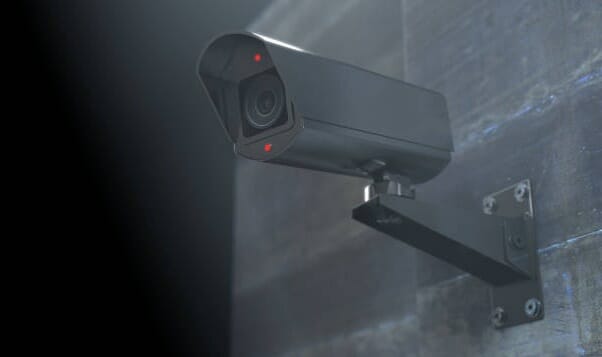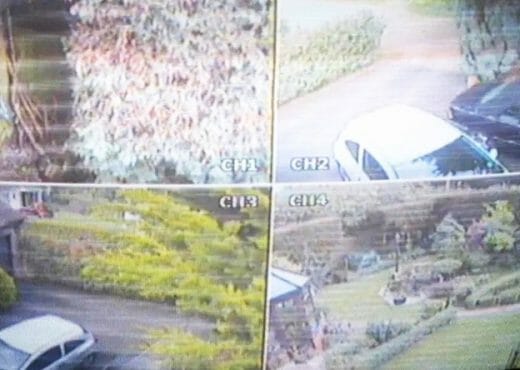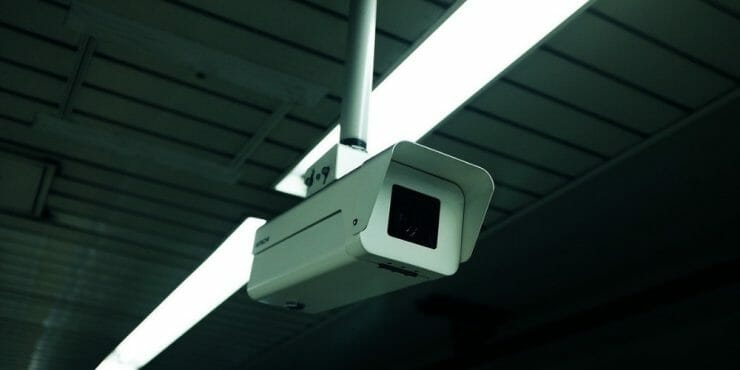Quick Navigation
The most common reasons a security camera flickers at night are:
- Electrical frequency
- Power issues
- Changing light conditions
- Problems with the power supply
- Damaged connections or cables
- Aging or faulty equipment
- Updates to the latest firmware
- Use of the Anti-Flicker function
- NTSC and PAL
- Loop-through equipment
Security cameras sometimes experience a flicker at night. This may be due to the sensitivity & brightness of the camera & how it handles low-light conditions.
A flickering camera makes it harder to view live or recorded footage. Since that is the primary purpose of a security camera, this makes the security camera unusable.
There are several factors that can cause a camera to flicker. We are going to discuss each cause and how to fix the problem if that is the cause.
Electrical Frequency
Different countries may have a different frequency of the electric current. For example, a camera made for use in China or Europe, if installed in the US, will be incompatible with the power supply. (1)
In the US, the supplied voltage is 110 volts to 120 volts at a frequency of 60hz. In China, Europe, and a lot of other countries, 220 volts to 240 volts are supplied at a frequency of 50hz. Security cameras sold in the US are designed to operate at 60hz, whereas cameras from other countries are designed to operate at 50hz. If a camera designed to operate in 50hz is used in the US, it may flicker.
The solution to this is to access the camera settings. Many IP cameras allow you to change the frequency in the settings. Once you change the settings from 50hz to 60hz, you’ll be good to go.
1. Power Issues

Frequent loss of power or getting less power than required can cause your camera to flicker. Cameras especially flicker during the night because of this reason. This is because security cameras have night vision which sees in infrared light placed on the camera. At night, these infrared bulbs require more power, and if the power supply does not supply the required power, the camera will flicker.
To solve this issue, check if your power source is capable of providing enough power to your cameras.
2. Changing Light Conditions

Another common cause of cameras flickering at night is sudden changes in light. Sudden changes in light, such as light from the headlights of cars passing by, may cause the camera to flicker. Changes in lighting cause the camera to try to adjust to the new brininess. This includes adjusting the infrared LEDs. Sudden changes may cause flickering issues while the camera is continuously trying to adjust.
If frequent changes in lighting conditions are causing your camera to flicker, positioning or changing the angle of the camera such that it is not pointing towards the changing lights should solve this problem.
3. Problems with the Power Supply

PoE switches have a limited total power budget. If the devices connected to the PoE switch exceed this power budget, it will not be able to supply enough power for the cameras to function correctly. If your cameras run on PoE, check the total power output of the PoE switch and if the total power output is enough to support all the cameras connected.
There is also a limit to how much power a single PoE port can supply. PoE ports are capable of delivering up to 17W of power if the switch allows. If your cameras need more power at night than 17W, they will flicker at night.
To solve this, you will need a switch with PoE+ ports that provide up to 34.2W of power to the plugged camera.
4. Damaged Connections or Cables

Damaged power or data cables can cause the camera footage to flicker. A damaged power cable can cause irregularities in the power supplied to the camera, which would result in problems similar to those caused by power issues. Damage to the data cables would result in a limited rate of data transfer or incomplete data transfer, which can cause flickering.
These damages are common as a result of environmental exposure. Long-term exposure to sunlight may harden the wire insulation, making them easy to break. Wired exposed out of the insulation can corrode easily, limiting the rate of data transfer.
These problems are more likely if the wires being used are too long or longer than the recommended maximum length of the camera or the switch.
To solve this, use the wires from a working camera and see if that fixes the problem. If it does, replace the problematic wire.
5. Aging or Faulty Equipment

Most of the preceding issues can be sub-issues of this parent issue. Old and aged equipment is sure to have damaged components which may appear as other issues. For example, if the light detector in the camera is faulty, the camera will be more susceptible to flicker because of rapidly changing lighting conditions. Faulty ports in the camera may also worsen data and power problems.
Old cameras are more prone to problems simply due to their use of older technology as well. Old cameras require more power to operate, which can result in power problems and have less advance light adjustment sensors and processors. Older cameras are also not as good at compressing data which can worsen data transfer problems.
Getting a new camera and equipment is a foolproof way to improve all of the aforementioned problems without any hassle.
Update to the Latest Firmware

Sometimes flickering problems can be caused as a result of using outdated firmware. You can solve this issue but updating the firmware of your security cameras. Updated firmware may be better adapted at solving firmware issues, light those caused by rapidly changing lighting conditions as well. (2)
To update to the latest firmware, contact your manufacturer or supplier.
Use the Anti-Flicker Function
Light sources run on AC current, which oscillates at a frequency of 60hz. This means that some light sources turn on and off rapidly 60 times a second. This flickering may interfere with the frame rate of the camera and cause a flickering effect.
To counter this effect, many DVRs and NVRs have an anti-flicker function. Turning this option on may fix the flickering issue if it is caused by flickering lights.
NTSC and PAL
Video footage captured by cameras is too large to be sent via data cables. Cameras compress the video footage via a process called encoding before sending it. Analog cameras use NTSC and PAL, two different video encoding methods, to compress data. These encoding systems are meant for different frame rates and different resolutions and are used in different regions of the world. NTSC is the one used in the US.
Most devices are capable of playing video encoded by either of these. Hence these decoders can work in the US as long as the cameras support both of these formats. If your cameras do not support both of these, it may cause the footage to flicker.
In order to fix this, try going to the camera settings and changing the encoding system.
Loop-through Equipment
Your camera footage may be flickering because the outputs are not terminated currently. If you’re using loop-through equipment, make sure you terminate all the outputs currently.
Flickering in the security camera footage can be caused by a number of factors. Some of the most common causes of these problems are inadequate power supply, changing lighting conditions, and faulty/outdated equipment and firmware. You can solve these problems by first diagnosing the problem and then responding with an appropriate solution.
References
(1) Electrical Frequency – https://medium.com/drax/what-is-electrical-frequency-and-why-does-it-matter-fb60ae883246
(2) firmware – https://www.techopedia.com/definition/2137/firmware

